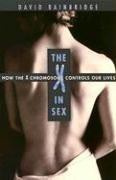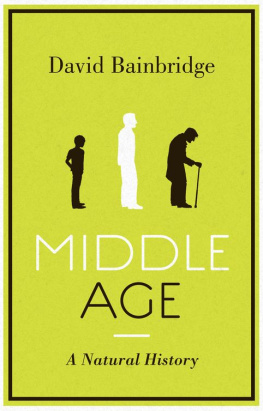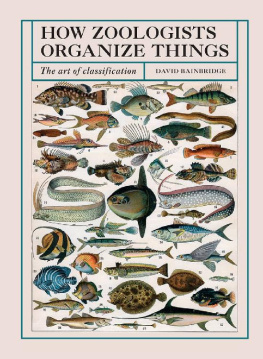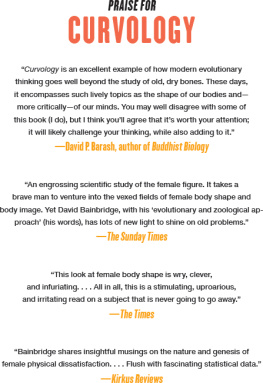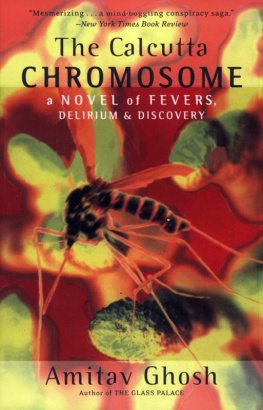David Bainbridge - The X in Sex: How the X Chromosome Controls Our Lives
Here you can read online David Bainbridge - The X in Sex: How the X Chromosome Controls Our Lives full text of the book (entire story) in english for free. Download pdf and epub, get meaning, cover and reviews about this ebook. City: Cambridge, Mass, year: 2003, publisher: Harvard University Press, genre: Romance novel. Description of the work, (preface) as well as reviews are available. Best literature library LitArk.com created for fans of good reading and offers a wide selection of genres:
Romance novel
Science fiction
Adventure
Detective
Science
History
Home and family
Prose
Art
Politics
Computer
Non-fiction
Religion
Business
Children
Humor
Choose a favorite category and find really read worthwhile books. Enjoy immersion in the world of imagination, feel the emotions of the characters or learn something new for yourself, make an fascinating discovery.
- Book:The X in Sex: How the X Chromosome Controls Our Lives
- Author:
- Publisher:Harvard University Press
- Genre:
- Year:2003
- City:Cambridge, Mass
- Rating:4 / 5
- Favourites:Add to favourites
- Your mark:
- 80
- 1
- 2
- 3
- 4
- 5
The X in Sex: How the X Chromosome Controls Our Lives: summary, description and annotation
We offer to read an annotation, description, summary or preface (depends on what the author of the book "The X in Sex: How the X Chromosome Controls Our Lives" wrote himself). If you haven't found the necessary information about the book — write in the comments, we will try to find it.
The X in Sex: How the X Chromosome Controls Our Lives — read online for free the complete book (whole text) full work
Below is the text of the book, divided by pages. System saving the place of the last page read, allows you to conveniently read the book "The X in Sex: How the X Chromosome Controls Our Lives" online for free, without having to search again every time where you left off. Put a bookmark, and you can go to the page where you finished reading at any time.
Font size:
Interval:
Bookmark:

THE X IN SEX:
HOW THE X CHROMOSOME CONTROLS OUR LIVES
DAVID BAINBRIDGE
HARVARD UNIVERSITY PRESS
CAMBRIDGE, MASSACHUSETTS
LONDON, ENGLAND
For Edward
Thanks for taking the Y off my hands.
I wasnt really using it much anyway.
And if you have any complaints about the X, blame your mother.
CONTENTS
PROLOGUE
1. MAKING A DIFFERENCE
INTERLUDE: WHAT IS IT, EXACTLY?
2. THE DUKE OF KENTS TESTICLES
INTERLUDE: HOW SEXY IS X?
3. THE DOUBLE LIFE OF WOMEN
EPILOGUE: THE CHOSEN ONE
FURTHER READING
GLOSSARY
INDEX
A woman is, as it were, a mutilated man, for it is through a certain incapacity that the female is female.
Aristotle, Generation of Animals
Thus man... is the active principle while woman is the passive principle because she remains undeveloped in her unity.
Hegel, Philosophy of Nature
One is not born, but rather becomes a woman.
de Beauvoir, The Second Sex
PROLOGUE
It has been six weeks now. Six weeks of tireless, frenzied activity since that sperm jostled its way into that egg. So little time spent in this warm, dark, womby home, and so much achieved.
First came those days of dividingceaseless splitting and splitting that turned a single fertilized egg into hundreds of tiny cells. Most of those cells went into making a protective hollow ball, but safe inside that ball lay another clump of cells with a very special destiny. That was four weeks ago, but how things have changed. The little clump of cells now looks recognizably like a tiny baby. It has grown, of course, but even more dramatic is the way it has organized itself into a child, with head, body, arms, legs, eyes, mouth. Really, all these bits and pieces have to do in the remaining thirty-four weeks before birth, is grow.
Yet there is one part of the baby that is still far from finished, and in many ways it is the most important. After all, the reason why nature makes us have babies is so that those babies can have their own babies. But even though so much of the babys body has been mapped out, the parts that will make future grandchildren are far from complete. Deep inside the embryos belly, just to the side of its kidneys, lie its gonadsthe organs that will eventually turn into ovaries or testicles and drive the childs sexuality up to birth, to puberty, and long into adulthood. The gonads are already crammed full of germ cellsfuture sperm or eggsbut at six weeks, they still do not know which way to turn. The embryo does not yet know if it is a boy or a girl. The jargon name for the gonads at this stage is indifferent, and somehow it describes them so well. They are, in fact, supremely indifferent. They are neither male nor female, but hovering in sexual limbo somewhere in between. All the rest of the sexual organs are equally undecided; simple tubular structures awaiting their cue to turn into male or female genitals.
So what is the spark of sexuality that makes a child a boy or a girl?
In this book, I hope I can show you how this spark drives us to become men or womenpeople apparently so different, but made from the same stuff. Although many people are aware of the principles by which we are allocated our sex, I suspect that few realize that this is a story rich in history, evolution, and philosophy that challenges our views of society. We humans use an unusual method to decide our gender, and it can have dramatic effects on the way we live our lives. It may help many of us become normal men and women, but it also consigns many to a life of disease, disrupts the everyday running of our body, and even forces women to live a bizarrely double life. The actual physical entity that causes all this upheaval is a little nugget of life called the X chromosome, and this is its story.
MAKING A DIFFERENCE
What did it all mean? Hermann Henking peered intently down the microscope and desperately tried to explain the strange behavior of the little purple flecks on the glass slide. It was 1890, and all over the world scientists were studying these flecks, yet still they seemed as mysterious as ever. Many believed that they held the key to the holy grail of biologythe mechanism that allows offspring to inherit characteristics from their parentsbut no one could prove it. As Henking sat in his dingy laboratory in Leipzig, he was about to make a discovery that was to revolutionize the science of inheritance, but he was also to set that science back ten years. His observations would lead directly to our modern understanding of sexuality and inheritance, but no one would realize the importance of his work for another decade. Indeed, Henking himself was to wait a further thirty years before another zoologist explained to him the magnitude of what he had achieved.
The 1890s were, in retrospect, a deeply frustrating decade. Charles Darwin had already shown, in his book On The Origin of Species, that external forces could make animal species change over time, so long as parents could bequeath characteristics to their offspring. Yet no one could say how all this bequeathing was done. Everyone knew that children often resembled their parents, and that the same seemed to be true of calves, foals, puppies, kittensin fact, if you hunted hard enough, family resemblance seemed to occur in any type of animal you cared to look at.
So inheritance seemed to be a ubiquitous phenomenon, and yet nobody could explain it. Many zoologists argued about which bits of sperm and eggs carried the instructions to make each generation resemble the last. Most agreed that there must be some physical means by which these instructions were imparted to a new individual, but a few still argued that inheritance was a spiritual, and not a physical processto believe that inheritance was somehow mundane might remove God from his place at the center of human affairs. And here was Henking, making a discovery that was to resolve this whole debate. He was finding the inheritance machine, and he did not even realize it.
Although it may sound rather unpromising, Henkings strained eye was fixed on chromosomes from the testicle of an insect called Pyrrhocoris. Twenty-five years earlier, a new microscopic dye had brought the chromosomes (colored bodies) into view for a generation of scientists hunting the inheritance machine. These chromosomes had been found to behave in an enticingly unusual way. Every cell in the body holds a set of chromosomes, and most of the time these chromosomes do not, to be honest, look very special. The time when chromosomes spring to life is when a cell starts to divide into two daughter cells. The chromosomes magically change from rather vague, diffuse things into a neat set of clearly defined little threads carefully arranged in the middle of the cell. Even more intriguingly, the chromosomes are then teased apart into two apparently identical bundles, one of which is then packaged into each of the daughter cells. It seemed that chromosomes must be doing something pretty important if they were so neatly partitioned between cells, so could they be the inheritance instructions that scientists sought?
Henking was not studying fly testicles because he was interested in fly testicles. Scientists can be strange people, but not usually that strange. One of the most intriguing features of chromosomes was apparent only in testicles and ovaries, where cells divide to make sperm or egg cellsthe cells that make the next generation. The cell divisions that made sperm and eggs seemed very different from the divisions that made all other cells. Instead of the single-step cell division that takes place when other cells are made, the chromosomes go through a strictly choreographed sequence of two successive divisions, and during these divisions, they are in a state of constant interaction with each other. Why should there be such an especially elaborate chromosomal dance when eggs and sperm are made, if chromosomes are not involved in inheritance?
Next pageFont size:
Interval:
Bookmark:
Similar books «The X in Sex: How the X Chromosome Controls Our Lives»
Look at similar books to The X in Sex: How the X Chromosome Controls Our Lives. We have selected literature similar in name and meaning in the hope of providing readers with more options to find new, interesting, not yet read works.
Discussion, reviews of the book The X in Sex: How the X Chromosome Controls Our Lives and just readers' own opinions. Leave your comments, write what you think about the work, its meaning or the main characters. Specify what exactly you liked and what you didn't like, and why you think so.

